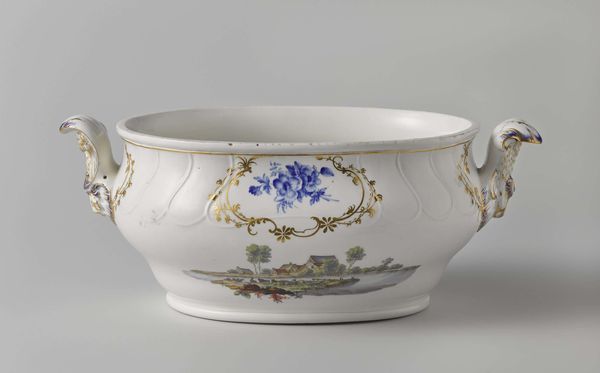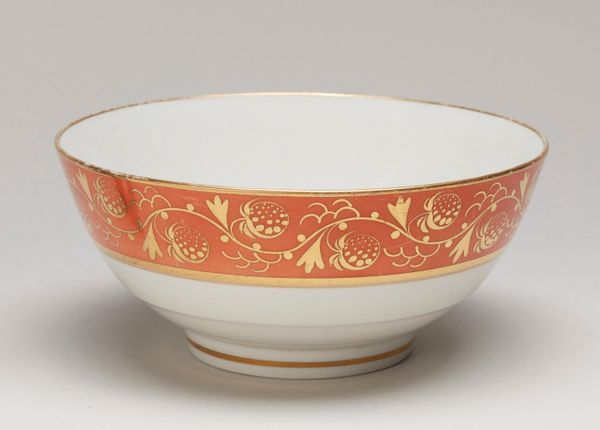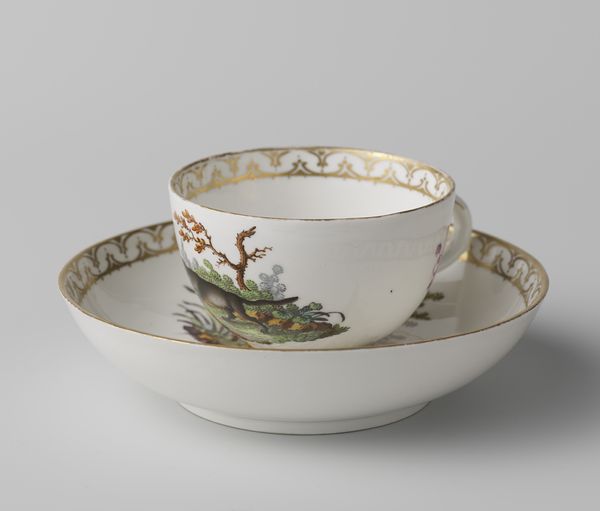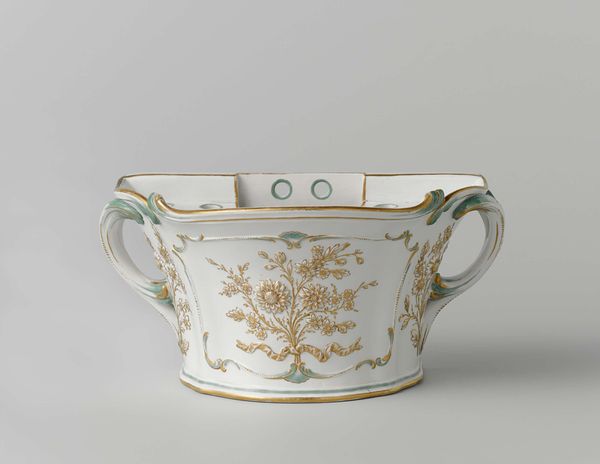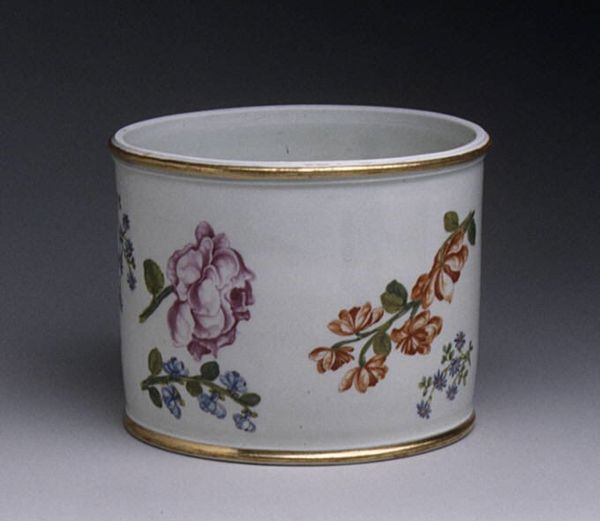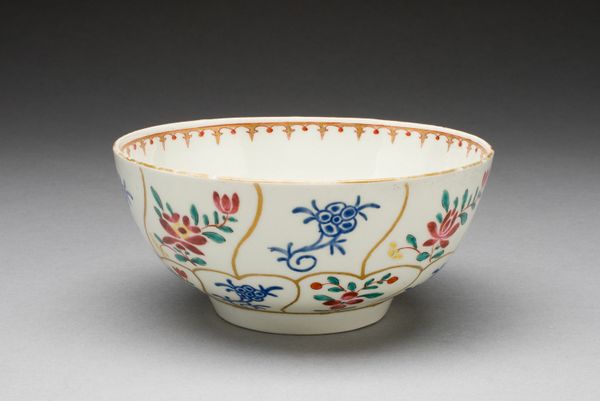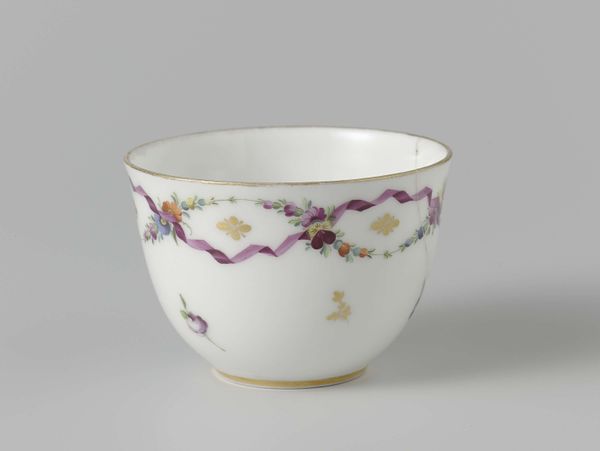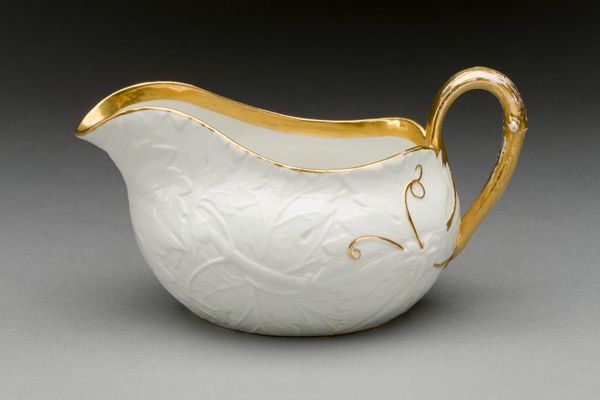
Plate from a Tea Service 1807 - 1813
0:00
0:00
ceramic, porcelain
#
ceramic
#
porcelain
#
ceramic
#
decorative-art
Dimensions: 4 5/8 x 7 1/4 x 4 1/2in. (11.7 x 18.4 x 11.4cm)
Copyright: Public Domain
Editor: Here we have a plate, part of a tea service, made by Worcester Porcelain Works between 1807 and 1813. It’s delicate porcelain, decorated with this sort of…coral band and golden filigree. It feels very much like a display piece, all surface ornamentation. What can you tell me about it? Curator: This plate speaks volumes about the means of production and the social rituals surrounding consumption in the early 19th century. The porcelain itself represents a complex manufacturing process, heavily reliant on skilled labor. Consider the source of the raw materials, the division of labor in the factory, and the transportation networks involved. Editor: So it’s more than just a pretty dish? Curator: Exactly! Porcelain production was a significant industrial activity. Who were the artisans crafting these objects? What were their working conditions? The Royal Worcester Porcelain Company wasn’t just creating beautiful objects, they were engaging in global trade and shaping consumer culture. The very act of drinking tea from such a delicate piece becomes a statement of wealth and social status. Editor: I hadn’t really thought about it in those terms, it does feel more complex. What about the decoration itself? Is it purely aesthetic? Curator: Think about the gilded details, a very thin coat of real gold. Ask yourself what the presence of that precious metal signified at that time. Then look at that repeated vegetal motif --what does that choice communicate about a rising middle class seeking ties to both the land and established nobility? Editor: So it’s all interwoven…the material, the manufacturing, and even the design reflecting class aspirations and the act of consumption. I see it now, thank you! Curator: Indeed. And through that analysis, we disrupt the notion that it’s merely a “decorative art” piece, to recognize the labor, trade, and social structures it embodies.
Comments
No comments
Be the first to comment and join the conversation on the ultimate creative platform.

